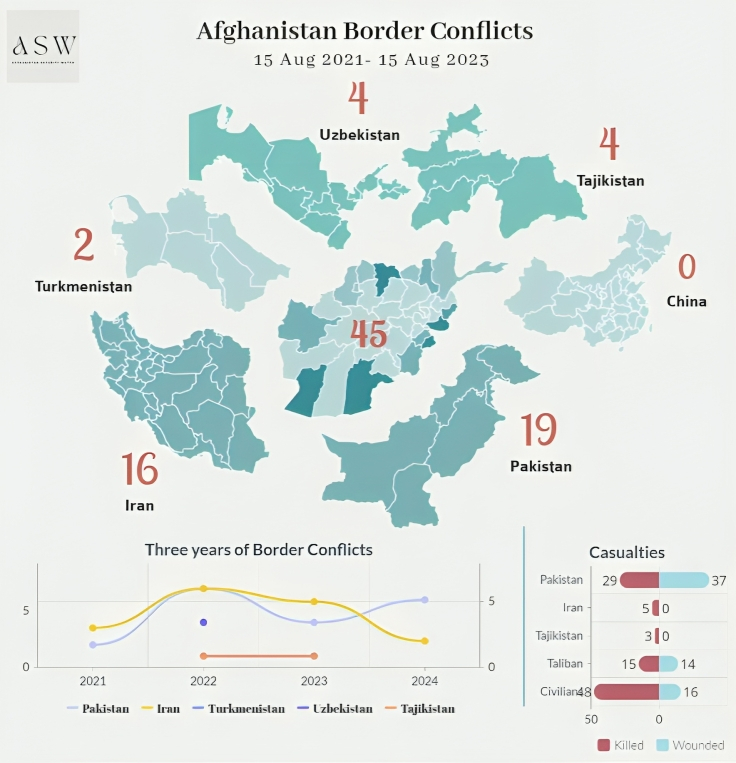Research Details
The Afghanistan Security Watch conducted a study on the border tensions between the Taliban and neighboring countries during the Taliban’s three-year rule in Afghanistan
(August 15, 2021 – August 15, 2024).

Afghanistan Border Conflicts (15 Aug 2021- 15 Aug 2024)
The Afghan Security Watch conducted a study on the border tensions between the Taliban and neighboring countries during the Taliban’s three-year rule in Afghanistan (August 15, 2021 – August 15, 2024). The report highlights key findings on the nature and causes of these conflicts, offering insights into the dynamics of border disputes during this period:
- Over the past three years of Taliban rule, there have been at least 45 recorded clashes between the group and Afghanistan’s neighboring countries. Pakistan accounted for the highest number of incidents, with 19 cases, followed by Iran with 16. Tajikistan and Uzbekistan each were engaged in 4 clashes, while Turkmenistan experienced 2. Notably, China remains the only neighboring country without any reported conflicts, likely due to its brief shared border with Afghanistan.
- Clashes with northern neighbors—Turkmenistan, Uzbekistan, and Tajikistan—were concentrated in the Taliban’s first two years of power and declined significantly thereafter. Some incidents involved terrorist groups within Afghanistan launching attacks against these northern countries.
- Border tensions were most frequent with Pakistan, Iran, and Uzbekistan, though the clashes with Uzbekistan were limited to 2022.
- Nimroz province witnessed the highest number of border conflicts, with 14 incidents, followed by Kandahar with 6, and Nangarhar, Balkh, and Khost with 4 each. Conversely, provinces like Nuristan, Logar, Helmand, Farah, and Badghis saw little to no recorded clashes.
- Around 90% of these border tensions escalated into military confrontations, some of which were severe. A significant incident in 2022 involved Pakistani airstrikes in Khost and Kunar provinces, resulting in approximately 50 civilian casualties, including deaths and injuries.
- The causes of these clashes varied: tensions along the western and northern borders with Iran and Central Asia stemmed largely from the Taliban’s lack of experience in border management. On the eastern border with Pakistan, however, clashes were driven by aggressive actions on both sides.
